Streamlining the food gifts purchasing process
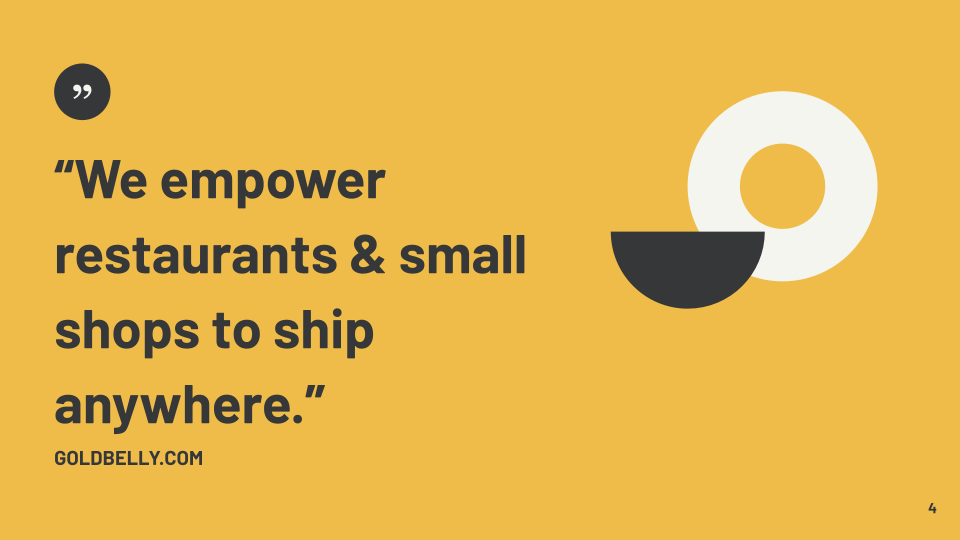

The team conducted a between-subject tree sort activity based on Goldbelly.com, a nationwide gourmet food delivery service. The tree sort was a follow up activity coming out of a previously conducted card sort which directed the team's focus on two categories of the site that proved confusing and in need of a redesign: Foods, and Restaurants. A total of 31 participants took the tree sort activity over the course of two weeks.
Qualitative data was collected through an optional post-task question and a required post-activity survey questionnaire. Quantitative data was collected through the tree tests, after which both inferential and descriptive statistics were used to develop insights from the results.
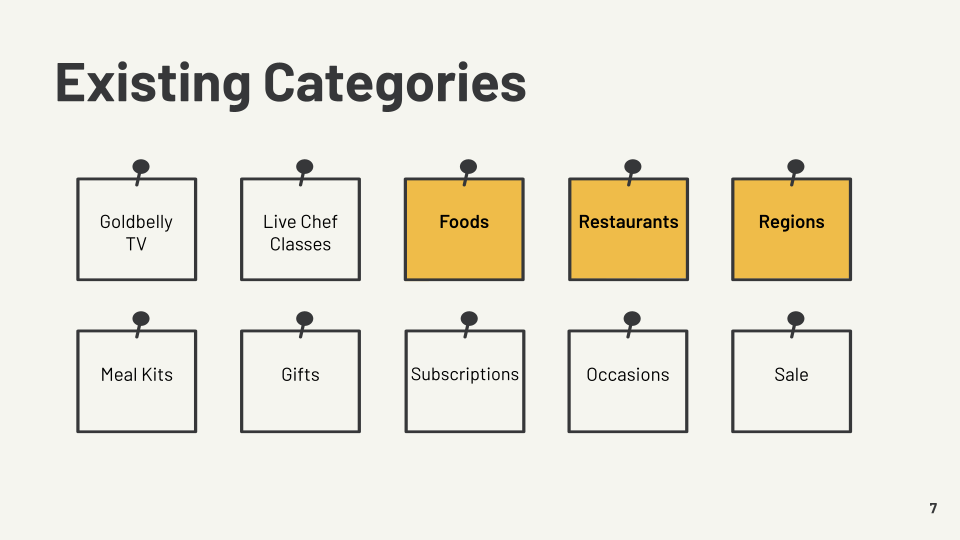
Goldbelly is an online marketplace that sells and delivers gourmet food and gifts from restaurants and chefs all across the U.S. The Goldbelly website has ten primary categories. Out of the 10 existing categories on the website, the team focused on the following three categories: Food, Restaurants, and Regions.
The team sought to uncover an understanding of how those with access to a smartphone or laptop organize the items under these three categories according to their needs and expectations from a website focused on nationwide gourmetfood delivery.
4 researchers from Bentley University, including myself. I was responsible for helping develop the card sorting activity, improved trees to test, recruiting participants, and helping to analyze the resulting data.
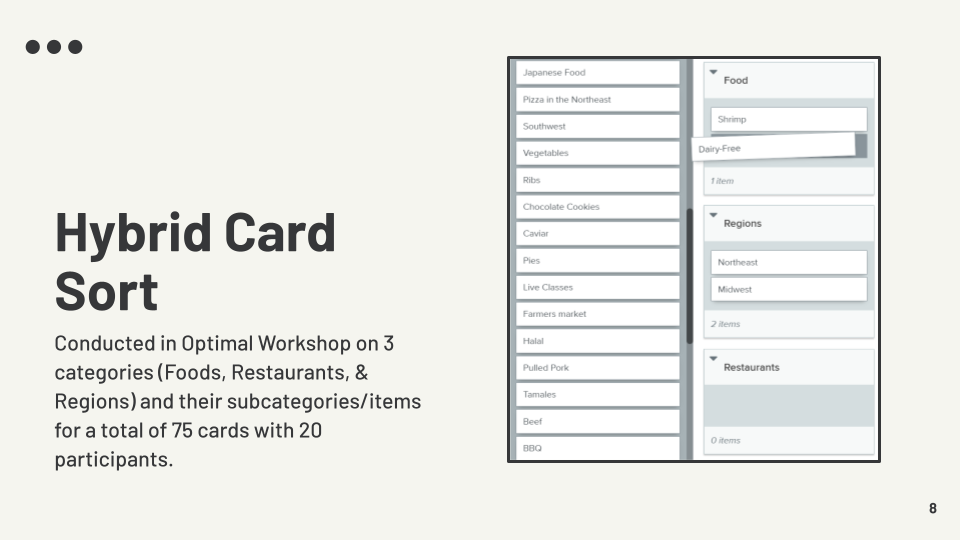
To gauge how users would organize content for Goldbelly.com, the team conducted a hybrid card sort on Optimal Workshop with a focus on three categories (Food, Restaurants, and Regions) and their subcategories for a total of 75 cards. A total of 24 participants took the card sort activity over the course of two weeks.
Based on our findings from the card sort, the team identified the following: the “Foods” category was large and needed subcategories, the “Restaurants” category and “Farmer's Markets” subcategory were not intuitive, and lastly, the existing site hierarchy can lead to confusion and in-depth menu navigation for certain users.
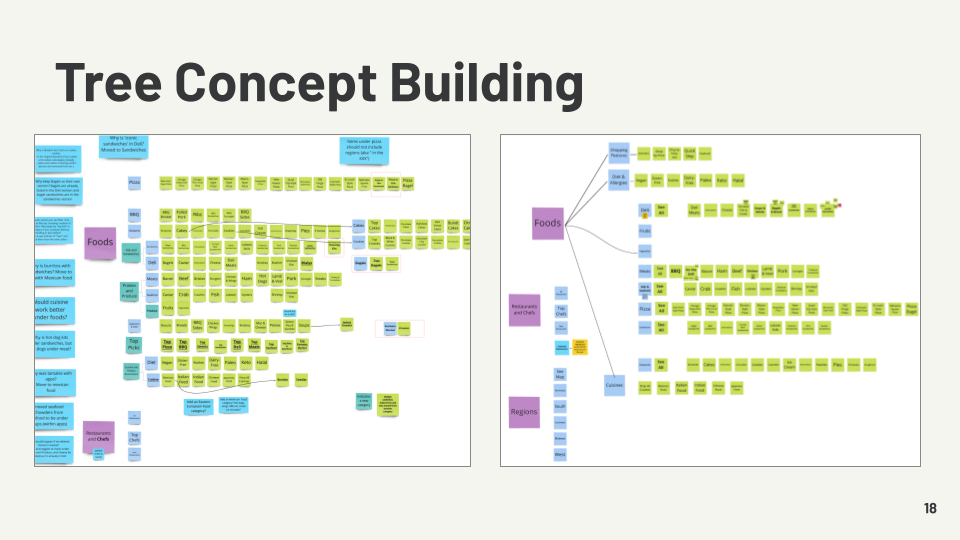
To follow-up on our card sort findings, the team conducted a tree testing activity. The team redesigned two of the three categories, Foods and Restaurants, as well as the Farmer's Markets subcategory. The goal was to evaluate how the hierarchy of the redesigned state compares to the current state of the Goldbelly website. Throughout this activity, the team focused on the following research questions:
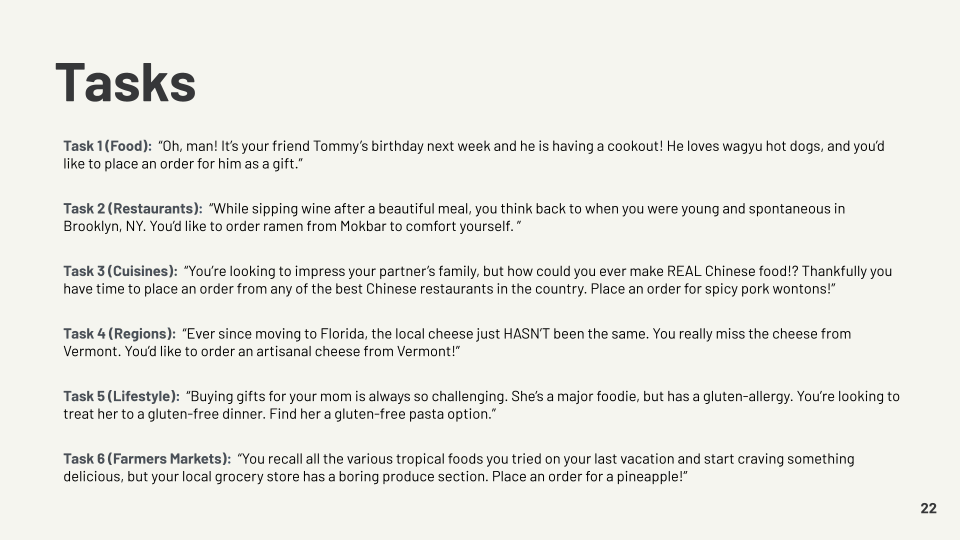
The tree sort was conducted as a between-subjects test design, so that each participant was only exposed to a single tree structure in order to minimize bias. Tree 1 stayed consistent with the current GoldBelly.com website layout. Tree 2 was influenced by the team’s card sort results and research questions.
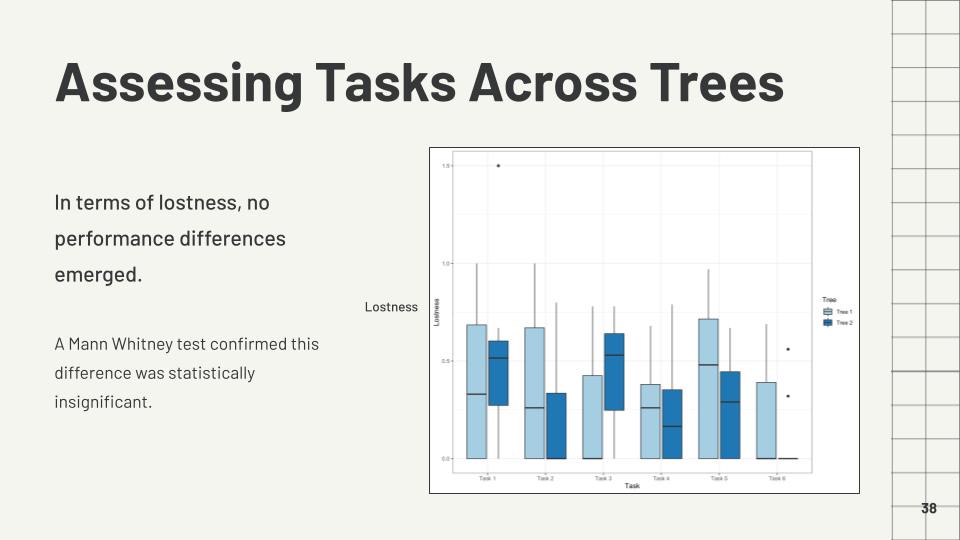
After data had been gathered, the team analyzed the data in Optimal Workshop, where the studies were created, Excel, and R Studio. The following metrics were analyzed both within trees and across trees:
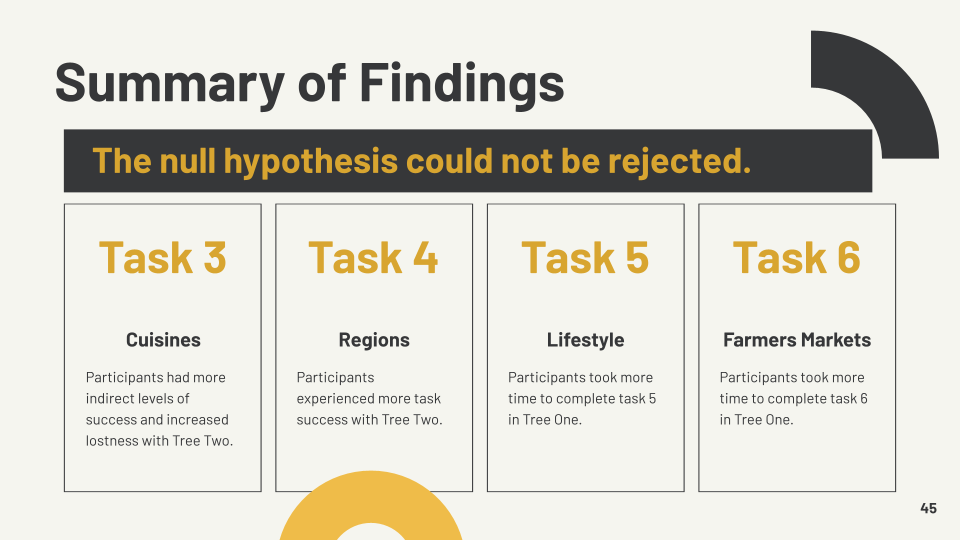
Using insights from our previous card sort study, the team conducted a tree test to evaluate how our re-design compared against the existing state in a between-subjects design. Although we found no difference between the existing state and the re-design, we still found valuable insights and were able to provide recommendations for improvement.
By focusing on the areas of improvement, Goldbelly.com could create a more positive experience for anyone looking to make a gourmet food purchase.
There are three things the team discussed that we would have done differently if we were running the studies again: